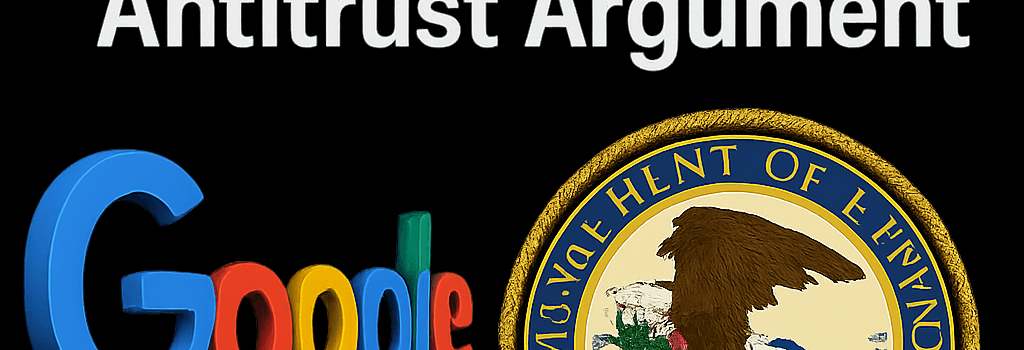Google vs. DOJ: AI’s Future Web in Antitrust Argument

In the closing chapter of the landmark antitrust trial, Google and the U.S. Department of Justice (DOJ) squared off over how generative AI and search monopolies will reshape the Internet. United States District Judge Amit Mehta heard final arguments on whether Google’s default-placement agreements, proprietary search index and browser ties constitute anticompetitive conduct—and if dramatic remedies like spinning off Chrome or licensing Google’s search engine are legally sound and technically feasible.
Background: From Search Giant to Antitrust Target
Founded in 1998, Google rapidly scaled its index of over 200 billion distinct web pages, powered by a distributed system spanning hundreds of petabytes of storage and trillions of precomputed ranking signals. By securing default search slots on devices and browsers—most prominently on Apple’s Safari and Mozilla’s Firefox—Google commands an estimated 91% share of the U.S. general search market.1 The DOJ alleges these placement agreements and exclusive contracts suppress rivals and lock out emergent AI-based search platforms.
Key Antitrust Contentions
- Default-Placement Deals: Contracts with Apple and Mozilla that make Google Search the out-of-the-box option on iOS, macOS and Firefox. Evidence shows over 95% of users never alter defaults.
- Search Index Licensing: DOJ’s proposal to force Google to license its proprietary index and ranking algorithms to third parties. Google warns this could expose user data systems handling millions of daily queries and jeopardize privacy.
- Chrome Divestiture: DOJ suggests separating Chrome from Alphabet to reduce the tight coupling between browser market share (over 65% globally) and search volume (35% via Chrome).
Collateral Impact on Partners
Testimony from Apple’s Eddy Cue estimated Google generates $20 billion annually for Apple through its search revenue share. Mozilla’s CFO warned that losing the default deal could imperil Firefox’s financial viability. DOJ’s David Dahlquist downplayed these risks as “private impacts” that don’t outweigh the public harm of a search monopoly. Judge Mehta probed whether remedies might inadvertently hobble entire browser and OS ecosystems.
Case May Hinge on AI-Driven Search Futures
When the trial began in 2023, generative AI search was nascent. Today, Google’s Gemini Advanced model (over 150 billion parameters) powers AI chat and search features with sub-second latencies on TPU v5e clusters. The DOJ argues AI’s rapid maturation makes market entry harder, not easier, since new entrants must build both large-scale web crawlers and real-time inference pipelines—efforts costing hundreds of millions in CapEx and OpEx.
Google counters that independent AI players like OpenAI (ChatGPT) and Perplexity have grown without Google’s index, showing no exclusionary conduct. Google attorney John Schmidtlein emphasized, “Generative AI firms innovate on retrieval-augmented generation; they’re not bidding against Google in the same product market as defined.”
Technical Analysis: Search Index Licensing and Privacy Architecture
Licensing Google’s index would require third parties to ingest 20+ petabytes of data, replicate MapReduce pipelines, and integrate user-personalization stacks. Experts warn this poses two major risks:
- Data Sanitation & Privacy: Professor Elena García (Carnegie Mellon) notes that de-identifying clickstream logs and personalization signals at scale demands rigorous auditing—failing which user privacy could be compromised.
- Infrastructure Security: Mirroring Google’s multi-region data centers and edge cache network to serve low-latency queries (<20ms P90) is beyond most startups without significant capital.
Barriers to Entry: Building AI-Driven Search from the Ground Up
Even as open-source LLMs proliferate, assembling a rival search engine entails:
- Operating a global crawling fleet with 1 million+ concurrent threads.
- Maintaining real-time ranking features and freshness pipelines for news and trending topics.
- Deploying multi-GPU inference clusters capable of handling 100k QPS for generative responses.
Former Yahoo! CTO Anand Rajaraman testified that replicating Google’s synergy of crawling, indexing and AI inference would take 5–7 years even with deep-pocketed backers.
Implications for Browser Engine Development and the Chromium Ecosystem
Forcing a Chrome divestiture raises questions about the open-source Chromium project, which underpins not only Google Chrome but also Edge, Brave and Opera. Challenges include:
- Governance: Ensuring a new steward can coordinate security patches and CVE disclosures across >70 downstream forks.
- Staff Retention: DOJ suggests transfer of key engineers with incentives, but industry veterans warn that a mass exodus would disrupt WebKit interoperability and WASM performance optimizations.
Judge’s Leanings and Next Steps
Judge Mehta described Chrome divestiture as “less speculative and more elegant” compared to data licensing. He remains wary of unintended harm to adjacent markets. His ruling is expected by August, with Google’s appeal likely to follow, potentially stretching this saga into 2026.
“Maybe people don’t want 10 blue links anymore,” Mehta mused, hinting at a broader redefinition of general search in an AI-first era.
Further Reading
- DOJ’s Proposed Antitrust Remedies: Full Text Analysis
- Technical Deep Dive: Generative AI in Search Workflows
- Chromium Governance Models: Open Source vs. Corporate Stewardship
Footnotes
- Statista, “Global market share of search engines,” Q1 2025.